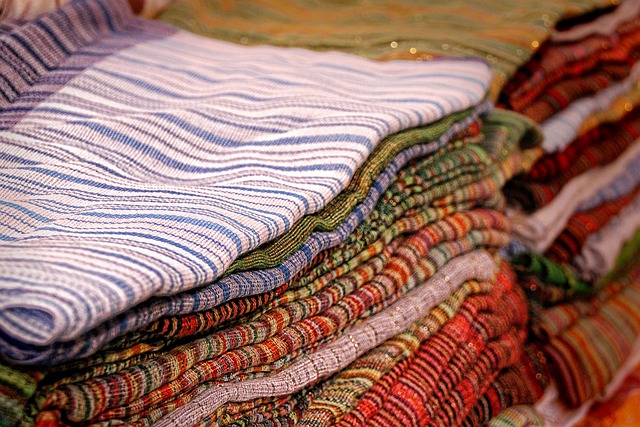CUTTING WASTE
Fabric cutting waste in textile production refers to pre-consumer waste from the material scraps that is left over after cutting fabrics. Using cutting waste is a sustainable practice of efficient utilization of leftover materials, minimizing the discard of fabric scraps. This practice involves strategic cutting techniques and innovative designs to reduce waste and make the most out of available resources, promoting sustainability in the textile industry.

The Challenge of Cutting Waste
Fabric cutting waste is a significant concern in the clothing and textile industries, accounting for the largest source of waste generated during manufacturing.
Traditional textile production methods often lead to substantial amounts of unused fabric scraps, contributing to both environmental and economic inefficiencies. As global awareness of sustainability increases, addressing the issue of fabric waste has become a crucial step towards a more eco-friendly future for the fashion industry.
Environmental Impact of Fabric Cutting Waste
The textile and fashion industries are notorious for their environmental footprint. Fabric cutting waste fills landfills and contributes to the depletion of natural resources, water pollution, and carbon emissions.
Every year, millions of tons of textile waste end up in landfills, with fabric cutting waste being one of the leading contributors. This waste is both a loss of material and waste of the resources, energy, and labor invested in producing those fabrics.
Sustainable Practices
As the fashion and textile industries start to realize the need for sustainability, there is a growing commitment to tackle the issue of fabric waste. This shift is important for meeting the demands of eco-conscious consumers who are prioritizing sustainability in their purchasing decisions.
Textile Cutting Waste Innovations
The textile industry is increasing its innovative solutions for combating the environmental impact of cutting waste. Here are some key strategies on how to reduce fabric cutting waste:
1. Precision Cutting Technologies
Innovations in cutting technologies, such as laser cutting and digital cutting machines, enable manufacturers to optimize fabric usage. These technologies allow for more accurate cuts, reducing fabric wastage during cutting and the manufacturing process. By using computer-aided design (CAD) software, manufacturers can create patterns that maximize fabric utilization, leading to significant waste reduction.
2. Zero-Waste Design Principles
Designers are more and more exploring zero-waste patterns, which aim to eliminate fabric waste entirely. This approach involves creating garments in such a way that every piece of fabric is used, leaving no off-cuts behind. By rethinking traditional garment construction methods, designers can craft beautiful and functional pieces without contributing to fabric waste.
3. Upcycling Techniques
Upcycling is another innovative approach gaining traction in the textile industry. This involves transforming fabric scraps into new, valuable products. Designers are creatively repurposing waste materials into accessories, home decor, or even entirely new garments.
4. Circular Fashion Initiatives
The concept of circular fashion emphasizes a closed-loop system where materials are continuously reused and recycled. By integrating circular economy principles, the textile industry can reduce its ecological footprint significantly. Manufacturers are beginning to implement take-back programs, encouraging consumers to return old garments for recycling or upcycling. This initiative promotes the idea that fashion can be both stylish and sustainable.
The Future in Textile
As we move forward, the importance of addressing fabric cutting waste cannot be overstated. By using sustainable practices, the textile and fashion industries can lead the way towards a more eco-friendly future. With continued innovation, collaboration, and a commitment to sustainability, the industry can transform its practices, reduce waste, and create a positive impact on the environment.
If you’re a designer, manufacturer, or consumer, consider how you can contribute to reducing fabric waste. Support brands that prioritize sustainability, advocate for zero-waste practices, and explore the possibilities of upcycling.
Together, we can create a more sustainable fashion industry that values our planet as much as style.
